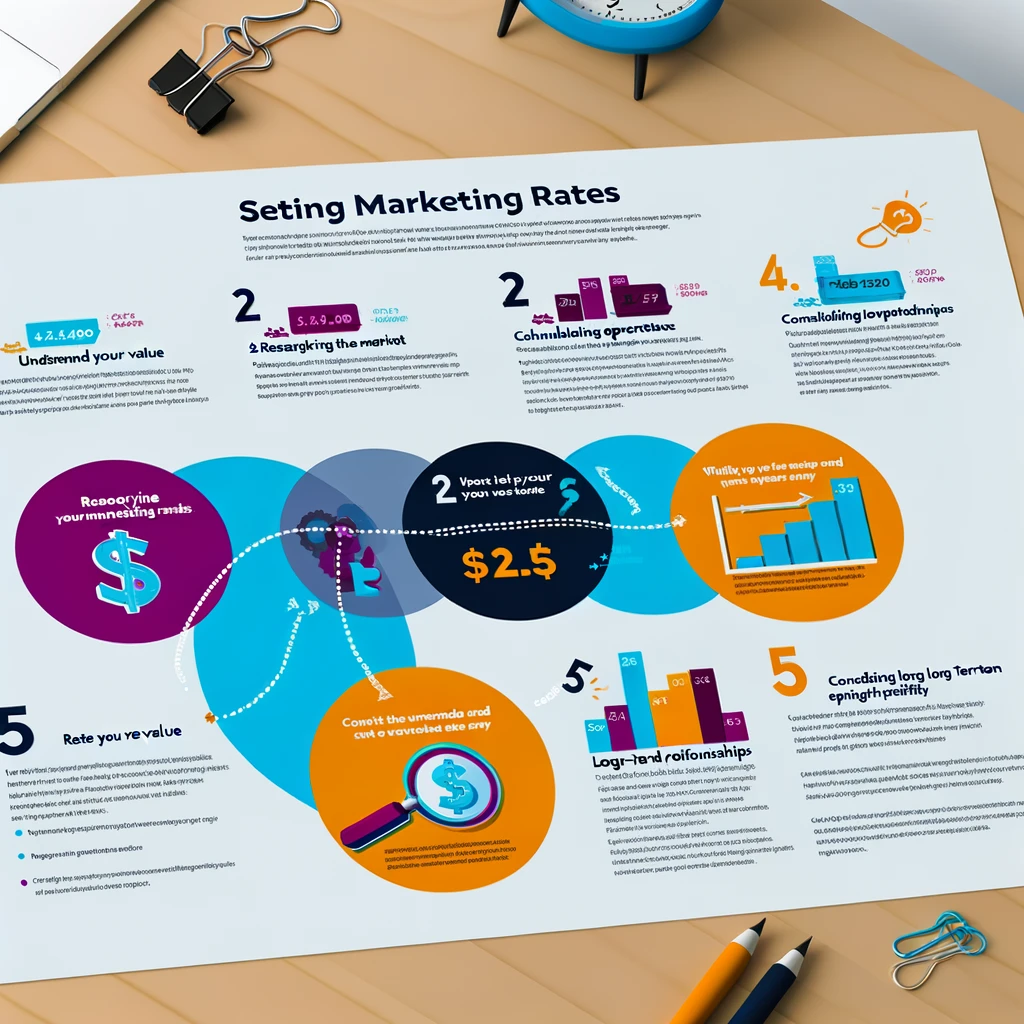
Freelance Marketing Rates: How to Calculate Them in 5 Steps (With Expert Tips)

When it comes to the world of freelancing, setting the right rates for marketing services can seem daunting. However, understanding how to effectively calculate these rates is essential for both maintaining competitiveness and ensuring profitability. This guide breaks down the process into five manageable steps, enriched with expert tips to help you navigate through each phase with confidence.
Step 1: Understand Your Value
The first step in setting freelance marketing rates is to thoroughly assess your own value. This involves considering your experience, skills, and the unique solutions you bring to the table. For instance, a seasoned marketer with a decade of experience should logically command higher rates than a novice. This doesn’t just reflect the time spent in the industry but also encapsulates the depth of knowledge and the breadth of connections the marketer brings.
Example of market rate understanding:
Below, you’ll find a list of factors that can influence your rate:
- Experience Level: More experience can justify higher rates.
- Specialization: Niche skills demand premium rates.
- Market Demand: High demand skills can increase your rate.
- Geographic Location: Rates can vary significantly by location.
Step 2: Research the Market
Market research is vital. You must understand what others are charging and how your services stack up against the competition. This doesn’t mean you should simply match the rates of others. Instead, use this information to position yourself strategically within the market. Are your rates too low, potentially undervaluing your services? Or too high, risking pricing yourself out of potential projects?
Contrasting Thought: While it’s tempting to undercut competitors to attract more clients, this strategy can backfire by diminishing the perceived value of your services.
Step 3: Calculate Operational Costs
Running a freelance business isn’t free. From software subscriptions to marketing your services, you need to factor in all operational costs when setting your rates. This ensures your rates cover your expenses and leave room for profit.
Illustration with metaphor: Think of your freelance venture as a vessel navigating through the ocean. Operational costs are like the winds—manage them well, and you’ll sail smoothly towards profitability.
Step 4: Factor in Time and Effort for Each Project
Each marketing project has its unique challenges and requirements. It’s crucial to estimate how much time a project will take and the level of effort involved. This will help you provide accurate quotes to your clients. Consider not only the hours you’ll spend creating a strategy or executing campaigns but also the time required for communication, revisions, and any potential setbacks.
Real-world example: For a social media campaign, you might spend 10 hours on strategy, 15 hours on content creation, 5 hours on client communication, and an additional 5 hours handling feedback and adjustments.
Here’s a detailed breakdown you might explain before a list or table:
Below, you’ll find a typical time allocation table for a freelance marketing project:
- Strategy Development: 10 hours
- Content Creation: 15 hours
- Client Communication: 5 hours
- Feedback Management: 5 hours
Step 5: Consider Long-Term Relationships and Pricing Flexibility
Building long-term relationships with clients can lead to consistent work and is often worth offering a rate that incentivizes ongoing collaboration. Consider offering a slightly reduced rate for long-term or retainer agreements as opposed to one-off projects. This strategy not only helps in filling your project pipeline but also in establishing a stable income.
Balanced perspective: While it’s advantageous to secure long-term clients at a reduced rate, ensure that this discount doesn’t significantly undercut your earnings. Maintain a balance where the reduced rate still covers your costs and allows for profitability.
Antithetical Thought: On the other hand, some argue that a freelancer should never lower their rates, proposing instead that one should always aim to maximize immediate income. This perspective emphasizes the unpredictability of freelance work and the need to maximize earnings when opportunities arise.
To enhance the credibility of your rates, consider incorporating testimonials or case studies that demonstrate the value you’ve provided to past clients. These real-world examples can significantly bolster the trust potential clients have in your pricing structure.
Conclusion:
Setting your freelance marketing rates involves a careful balance of understanding your worth, market positioning, operational costs, and the specific demands of each project. By following these five steps and adjusting based on your unique circumstances and goals, you’ll be well on your way to crafting a pricing structure that respects your expertise while appealing to potential clients.

